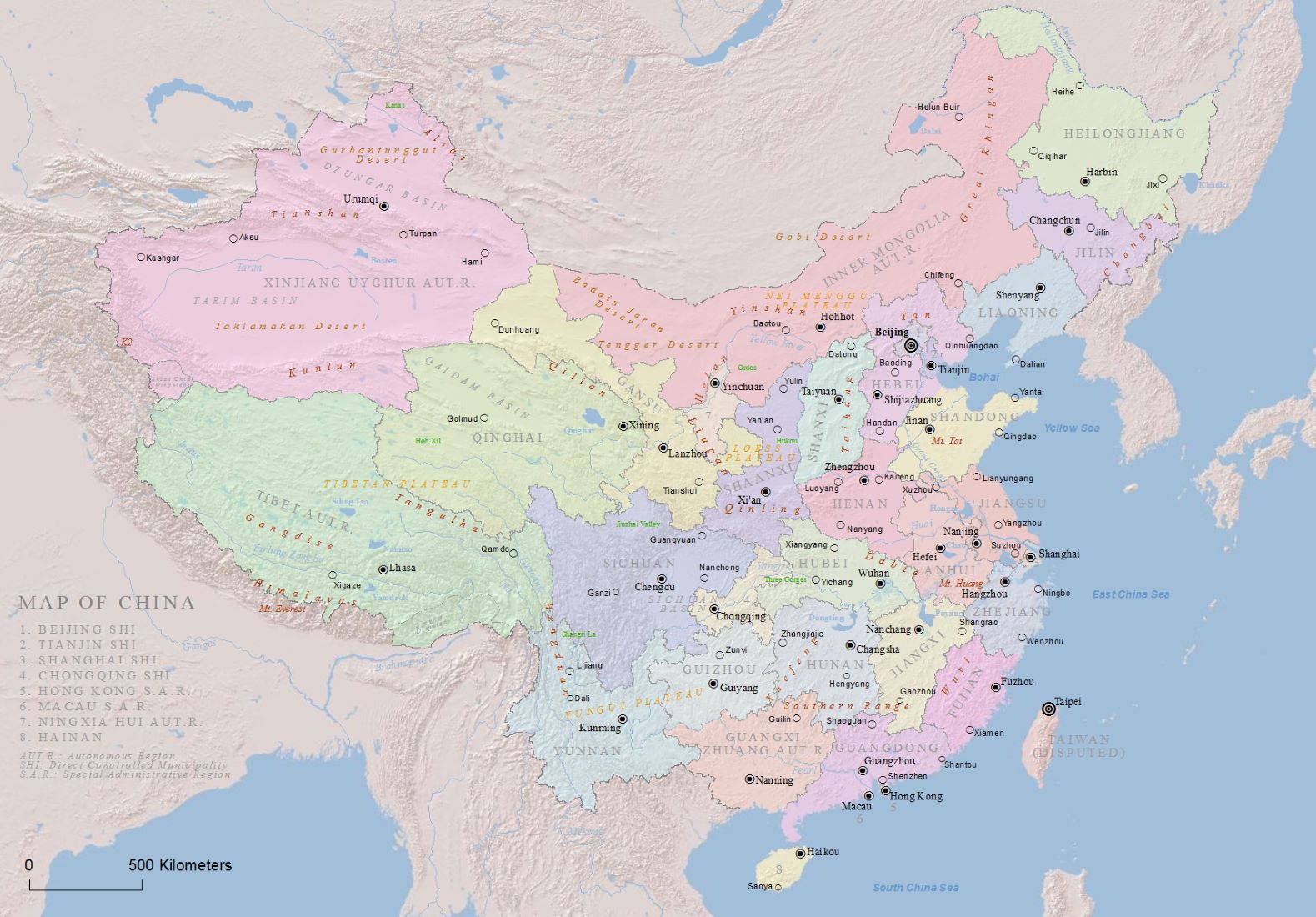
China's geography is as vast and diverse as its rich history and culture. From towering mountains to expansive deserts, and from bustling cities to serene countryside, this East Asian giant offers a unique blend of natural wonders and man-made marvels. Chinese geography is not just about the physical landscape; it's a tapestry of ecological diversity, climatic zones, and cultural significance that has shaped the nation's development, lifestyle, and traditions. Whether you're a geography enthusiast, a student, or simply curious, understanding these 24 facts will provide a deeper insight into what makes China's geography so special and influential on a global scale. Let's embark on a journey through the rivers, mountains, deserts, and cities that define China, uncovering the fascinating aspects of its geographical identity.
Understanding China's Vast Landscape
China, a country of great diversity and size, boasts an array of geographical features that span from the highest mountains to the deepest valleys. This vast nation is not only the fourth largest by area but also houses the world's largest population.
-
China covers approximately 9.6 million square kilometers, making it the fourth-largest country globally, following Russia, Canada, and the United States.
-
Home to the Himalayas' towering peaks, China hosts Mount Everest, the world's highest mountain peak, standing at an impressive 8,848 meters above sea level.
The Diversity of Chinese Climate
China's vast land area contributes to its diverse climate, ranging from subarctic in the north to tropical in the south. This diversity affects everything from agriculture to lifestyle across different regions.
-
The northern city of Harbin experiences bitterly cold winters, with temperatures plummeting to as low as -38 degrees Celsius, while the southern city of Hainan enjoys a tropical climate year-round.
-
China's diverse climate is also evident in its precipitation patterns, with the southeastern regions receiving over 1,500 mm of rain annually, compared to the arid northwest, where some areas receive less than 50 mm.
Major Rivers and Their Role in Chinese Civilization
Rivers have played a crucial role in shaping China's history, culture, and economy. The Yangtze and Yellow Rivers, in particular, are known as the cradles of Chinese civilization.
-
The Yangtze River, stretching over 6,300 kilometers, is the longest river in Asia and the third-longest in the world.
-
The Yellow River, known as the "Mother River" of China, spans about 5,464 kilometers. It has been both a source of life and a cause of devastating floods throughout China's history.
China's Varied Ecosystems and Natural Resources
China's diverse landscapes host a wide range of ecosystems, from dense forests and grasslands to deserts and wetlands, each supporting unique flora and fauna.
-
The country is one of the most biodiverse in the world, with over 34,687 species of animals and vascular plants.
-
China's forests, covering about 22% of the country, are home to the giant panda, one of the world's most endangered and beloved species.
-
The Gobi Desert, extending over 1.3 million square kilometers, is one of the largest deserts in the world and a significant natural barrier against the expansion of the Mongolian steppe into China.
The Impact of Geography on Population Distribution
China's geography significantly influences where people live, with the majority of the population residing in the eastern parts of the country.
-
Over 94% of China's population lives in the eastern third of the country, where fertile plains and river valleys support agriculture.
-
The western regions, characterized by high mountains and deserts, are sparsely populated, with some areas having less than one person per square kilometer.
China's Coastal Influence
China's long coastline along the Pacific Ocean has facilitated trade and contact with other cultures throughout history, contributing to the country's economic development.
-
The coastline stretches over 14,500 kilometers, with major ports like Shanghai playing a pivotal role in China's status as a global trade giant.
-
Coastal cities, due to their strategic locations, have historically been centers of trade, innovation, and cultural exchange, significantly influencing China's economic landscape.
The Role of Geography in China's Regional Cuisines
Geography not only shapes China's physical landscape but also its culinary diversity, with regional cuisines reflecting the available resources and climate of each area.
-
Sichuan cuisine, famous for its bold flavors and spiciness, is a direct result of the humid climate that encourages the use of strong spices.
-
In contrast, coastal regions like Guangdong offer a variety of seafood dishes, showcasing the bounty of the sea.
China's Environmental Challenges
China's rapid industrialization and urbanization have brought about significant environmental challenges, affecting air and water quality and leading to habitat loss.
-
Air pollution is a major concern in many Chinese cities, with industrial emissions and vehicle exhaust contributing to smog and health issues.
-
Water scarcity and pollution are pressing issues, particularly in the north, where overuse and contamination of water resources threaten agriculture and human health.
-
Deforestation and habitat destruction pose significant threats to China's biodiversity, with many species facing extinction.
The Future of Chinese Geography
As China continues to develop, its geography will play a crucial role in shaping its future, from urban planning and sustainable development to addressing environmental challenges.
-
Efforts to combat desertification, such as the Great Green Wall project, aim to restore degraded land and prevent the spread of deserts.
-
Sustainable agriculture practices are being promoted to ensure food security while minimizing environmental impact.
-
Urban planning initiatives are increasingly focusing on creating green, sustainable cities to improve residents' quality of life and reduce ecological footprints.
-
China's commitment to renewable energy sources, like wind and solar power, reflects a growing recognition of the need to address climate change and reduce reliance on fossil fuels.
-
The Belt and Road Initiative, aiming to enhance global trade routes, also highlights the strategic importance of China's geographical location in global economics and politics.
-
Advances in technology and infrastructure, such as high-speed rail networks, are transforming how people and goods move across China's vast landscape, further integrating the country's diverse regions.
A Final Look at China's Geographic Marvels
China's vast and diverse landscape is a testament to the country's rich and complex geography. From the towering Himalayas to the expansive Gobi Desert, each region offers a unique glimpse into the natural beauty and challenges that have shaped Chinese civilization over millennia. Rivers like the Yangtze and Yellow have been lifelines, supporting agricultural development and the growth of ancient cultures. Meanwhile, China's strategic coastal position has facilitated trade and contact with nations near and far, influencing global history. Understanding these 24 facts about Chinese geography isn't just about appreciating the country's physical attributes; it's about recognizing the deep interconnection between land, culture, and history. As we've journeyed through mountains, rivers, deserts, and plains, we've seen how geography has played a pivotal role in China's development, making it a fascinating subject for anyone keen on unraveling the mysteries of our world.
Was this page helpful?
Our commitment to delivering trustworthy and engaging content is at the heart of what we do. Each fact on our site is contributed by real users like you, bringing a wealth of diverse insights and information. To ensure the highest standards of accuracy and reliability, our dedicated editors meticulously review each submission. This process guarantees that the facts we share are not only fascinating but also credible. Trust in our commitment to quality and authenticity as you explore and learn with us.


